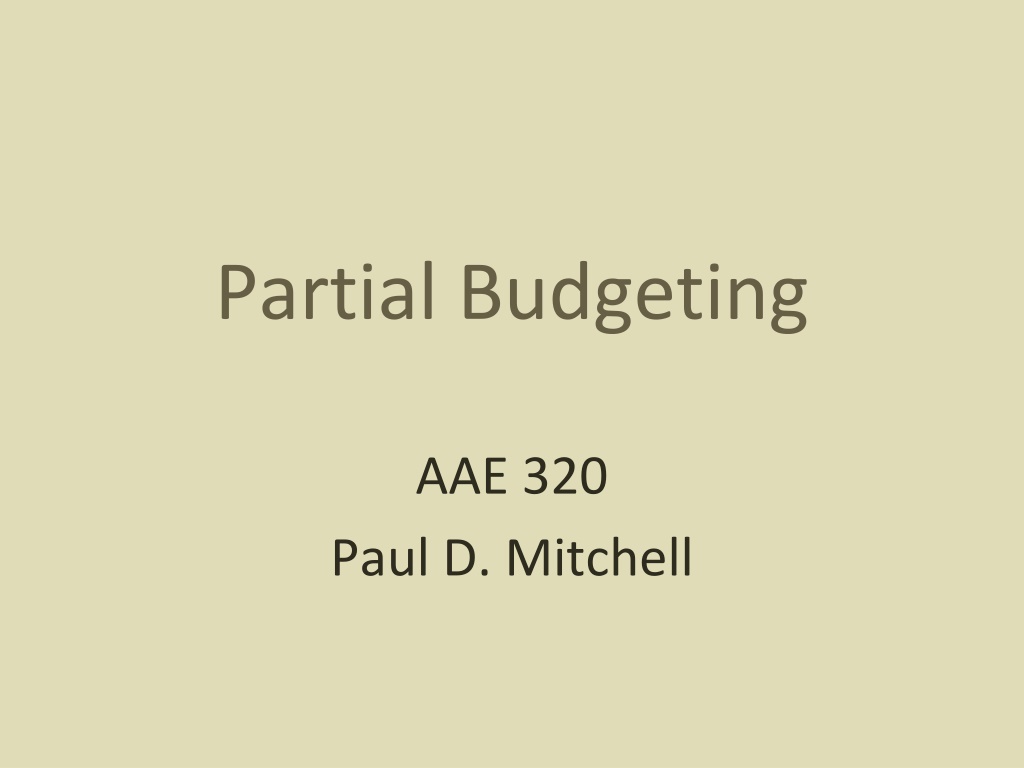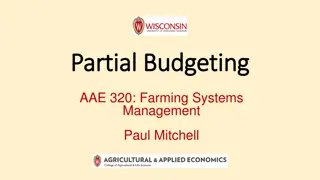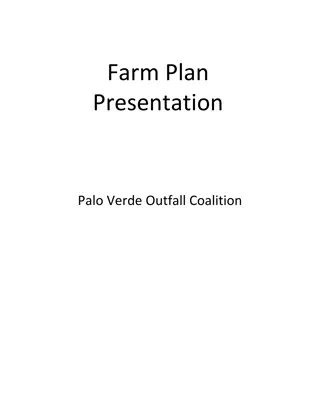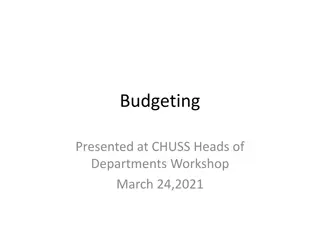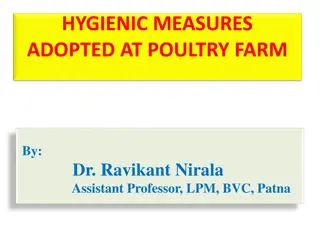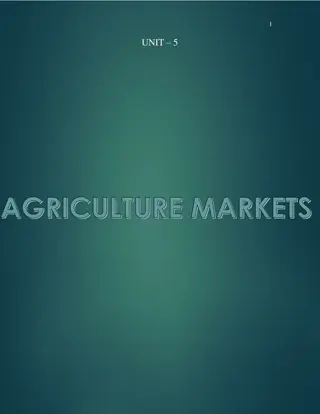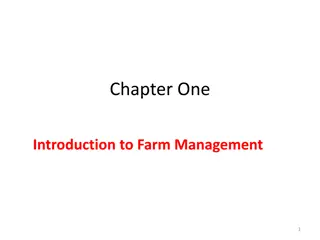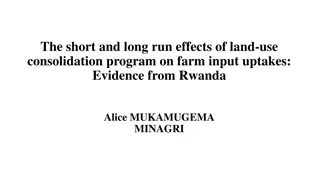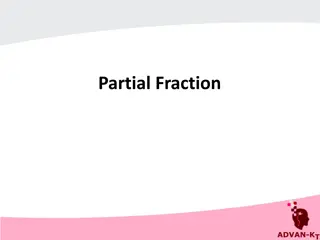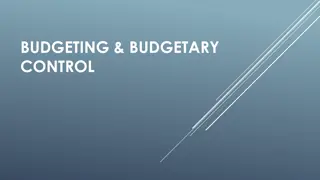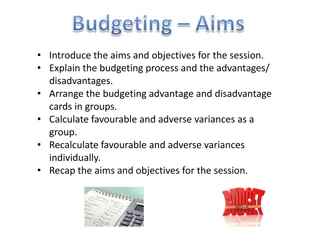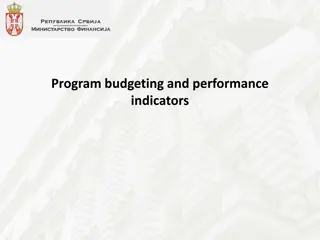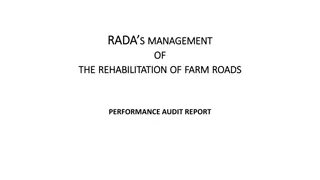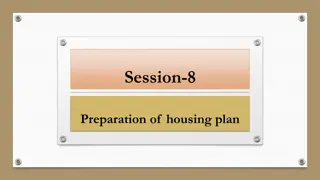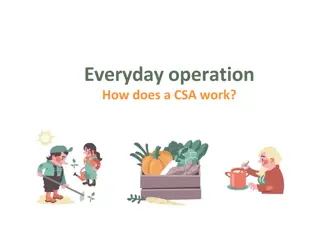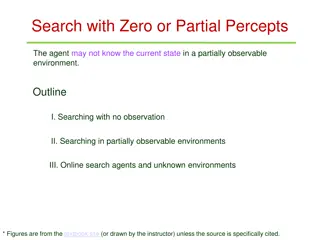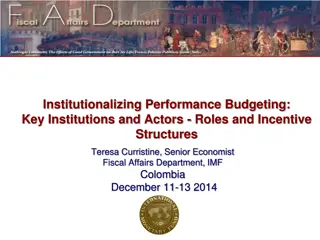Understanding Partial Budgeting in Farm Operations
Partial budgeting is a valuable tool for analyzing the financial impact of small changes or refinements in farm operations. It focuses on specific changes in costs and revenues, helping farmers make informed decisions to optimize their operations. By answering key questions and calculating net gains, farmers can fine-tune their practices and enhance profitability.
Download Presentation

Please find below an Image/Link to download the presentation.
The content on the website is provided AS IS for your information and personal use only. It may not be sold, licensed, or shared on other websites without obtaining consent from the author. Download presentation by click this link. If you encounter any issues during the download, it is possible that the publisher has removed the file from their server.
E N D
Presentation Transcript
Partial Budgeting AAE 320 Paul D. Mitchell
Learning Goals 1. Understand the purpose of partial budgets What sorts of questions do they answer? 2. Understand how to build and use a partial budget
Partial Budget Purpose To analyze net gain from small changes or refinements to farm operation Partial Budget: focuses only on the parts that change. You do not need a complete budget for each enterprise Use to fine tune current operation: Hold all else fixed to evaluate a small change Marginal/incremental analysis: change input use, shift between inputs or between outputs
Simple Examples to Analyze Using Partial Budget Analysis Do I plant rootworm Bt corn or conventional corn with a soil insecticide? Do I rent an additional 80 acres for corn? Do I buy a combine or continue custom hiring? Do I sell my current tractor and buy a new one? Do I pay for a soil test for N or just use credits?
Partial Budget Basic Idea Benefits: 1) What will be the new or added revenues? 2) What costs will be reduced or eliminated? Costs: 3) What will be the new or added costs? 4) What revenues will be reduced or lost? Partial Budget: Answer these 4 questions and then calculate Net Gain = Benefits Costs
Partial Budget: Define the change analyzed Benefits Additional Revenues What will be the new or added revenues? Costs Additional Costs What will be the new or added costs? Costs Reduced What costs will be reduced or eliminated? Revenues Reduced What revenues will be reduced or lost? Total Benefits Total Benefits Total Costs = Net Gain Total Costs
Planter Example Look at buying a planter for 1000 acres of corn and soybean versus custom hire What will be the new or added revenues? Increased yields due to more timely planting What costs will be reduced or eliminated? No longer pay for custom planting What will be the new or added costs? Fixed and variable costs of owning a planter What revenues will be reduced or lost? I can t think of any
Buy planter vs. custom hire for planting 1000 acres corn-soybeans (500 acres each) Additional Revenues What will be the new or added revenues? Higher yields with more timely planting Costs Reduced What costs will be reduced or eliminated? No longer pay cost for custom hire Total Benefits Total Benefits Total Costs = Net Gain Additional Costs What will be the new or added costs? Fixed and variable costs of owning a planter Revenues Reduced What revenues will be reduced or lost? None Total Costs
Buy planter vs. custom hire for planting 1000 acres (500 each) corn-soybean Additional Revenues 3 bu corn x $3.00/bu x 500 ac = $4,500 1 bu soybeans x $9/bu x 500 ac = $4,500 Costs Reduced Custom corn planting = $21/ac x 500 ac = $10,500 Custom soybean planting = $19/ac x 500 ac = $9,500 Total Benefits $29,000 Total Benefits Total Costs = Net Gain Additional Costs Corn $15/ac x 500 ac = $7,500 Soybeans $12/ac x 500 ac = $6,000 Revenues Reduced None Total Costs $13,500 $15,500
Planter Example Only focus on costs and revenues that change Estimate 3 more bu of corn and 1 more bu of soybeans due to more timely planting Corn = 1% loss/day in WI after May 8 Soybeans: 0.25/bu/day in IA study Estimate cost of owning and operating a planter: Estimating Farm Machinery Costs (ISU Extension https://www.extension.iastate.edu/agdm/crops/html/a3-29.html) Custom rates: Rounded 2017 WI Custom Rates: https://www.nass.usda.gov/Statistics_by_State/Wisconsin/Publications/WI-CRate17.pdf Is $15,500 ($15.50/ac) enough to justify the added hassle of owning and operating a planter?
Think Break #1 Suppose you are a corn-soybean farmer who currently custom hires all combining. You are thinking of buying a combine. Do a partial budget analysis of a Combine Purchase vs. Custom Hire decision Needed assumptions/information and questions are given in the next slide
Think Break #1 Combine Purchase vs. Custom Hire Corn acres = 1,000 Custom Rate = $25/acre Cost Estimate if owned: $22/acre 1% yield increase with more timely harvest Average Yield = 180 bu/ac; Expected Price = $3/bu 1) What will be the new or added revenues? 2) What costs will be reduced or eliminated? 3) What will be the new or added costs? 4) What revenues will be reduced or lost? 5) What s the net gain?
Partial Budget: Think Break #1: Combine Purchase vs Custom Hire Benefits Additional Revenues Costs Additional Costs Costs Reduced Revenues Reduced Total Benefits Total Benefits Total Costs = Net Gain Total Costs
Another Example: See how detailed it can become Add 50 beef cows to your cow-calf herd and convert 100 acres from grain to forage 1) What will be the new or added revenues? 2) What costs will be reduced or eliminated? 3) What will be the new or added costs? 4) What revenues will be reduced or lost? 5) What s the net gain?
Revenue Benefits 1) What will be the new or added revenues? Sell more steers, heifers, and cull cows Sell 46 more calves (92% efficiency) Save 5 heifers as replacements (10% cull rate) 23 steer calves x 500 lbs x $1.25/lb = $14,375 18 heifer calves x 460 lbs x $1.20/lb = $9,936 5 cull cows $500 each = $2,500 Total = $26,811
Cost Benefits 2) What costs will be reduced or eliminated? Variable inputs used for grain production Fertilizer, seed, pesticides, etc.: $5,350 Labor: $1,500 Variable machinery costs: $1,000 Interest on variable costs @ 6% = $470 Total = $8,320
Cost Costs 3) What will be the new or added costs? Fixed costs Interest on cows and bulls = $2,500 Bull depreciation = $300 Variable costs Labor = $600, Vet and health = $500 Feed/Hay = $2,000, Pasture fertilizer = $1,500 Hauling and Miscellaneous = $500 Interest on variable costs @ 6% = $300 Total = $8,200
Revenue Costs 4) What revenues will be reduced or lost? Grain production from 100 acres Corn: 160 bu/ac x $3.00/bu x 100 ac = $48,000 Soybeans: 40 bu/ac x $9.00/bu x 100 ac = $36,000 Use half of each, since 2 year rotation Total = ($48,000 + $36,000) = $42,000
Partial Budget: Add 50 cows to cow-calf operation and convert 100 acres to forage Benefits Additional Revenues 23 Steer calves, 18 heifer calves and 5 cull cows = $26,811 Costs Reduced Variable inputs for grain production = $8,320 Total Benefits $35,131 Costs Additional Costs Fixed and variable costs for 50 more cows and needed bulls = $8,200 Revenues Reduced Revenue from corn-soybean production = $42,000 Total Costs Net Gain $50,200 $15,069
Comments on Analysis Needed more complete enterprise budgets for cow- calf and grain & forage operations Fixed cost added for cows and bulls, but no fixed cost change for crop conversion from grain to forage. Why? Labor for cow-calf less than for grain ($600 vs. $1,500), an added benefit What will you do with the extra time? Create spreadsheet so can vary assumptions and see how much changes results
Final Comments on Partial Budgets Some things to consider when using partial budget analysis Economies of Size Opportunity Costs Sensitivity Analysis Risk Changes
Economies of Size Partial budget analysis assumes linear or proportional changes in costs and revenues Likely not quite accurate (due to fixed costs), but a useful and simple approximation Adding 20 cows to herd of 200 will increase labor demand, but less than 10% Dropping 100 acres from 1000 acre grain farm will decrease costs, but less than 10% Main Point: Linear (proportional) approximation is fine for small changes, but not for large need more complete budgeting if examine a large change
Opportunity Costs Should be included in the analysis Capital needs change: include costs (benefits) for borrowing more (less) money or tying up more (less) of your capital in farm assets Labor and Management changes: include the costs/benefits of your and your family's time commitment changes Change farm operation due to changes in credit or labor resources or desires
Sensitivity Analysis Assumptions used to construct partial budgets not always known with certainty Yield benefit for more timely planting Crop yields and prices Machinery costs Run analysis with a range of assumptions Low, average, high, worst or best case scenario Find break even price or yield and decide how likely Formally model uncertainty: use probability distributions, decision trees, or pay off matrices and Monte Carlo analysis Spreadsheets very useful for this
Risk and Partial Budgeting Partial Budgeting ignores changes in risk Converting 100 acres from grain to forage and adding 50 cows to cow-calf operation: What are the risk implications? Without formal tools , comparisons ignore risk, or you bring it in afterwards in ad hoc way The financial risk of owning a planter is too great to justify the $3,500 net benefit The risk of not finding a custom combiner is too great to justify the $6,900 net gain if I switch to using custom combining
More Information Partial Budgeting a common tool in ag, use Google to find examples Partial Budgeting: A Tool to Analyze Farm Business Changes (ISU Extension) Partial Budget Analysis (NDSU Agriculture Law and Management)
Summary Explained and illustrated the purpose of partial budgets Did examples, including Think Break #1 Explained some issues/weaknesses of partial budgets (size economies, opportunity costs, sensitivity analysis, risk) For problem set and exam: be able to make simple partial budget using given information and interpret findings
